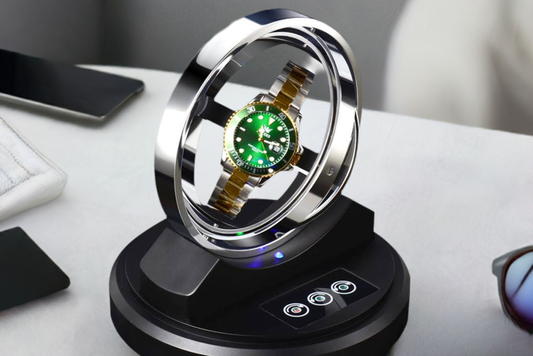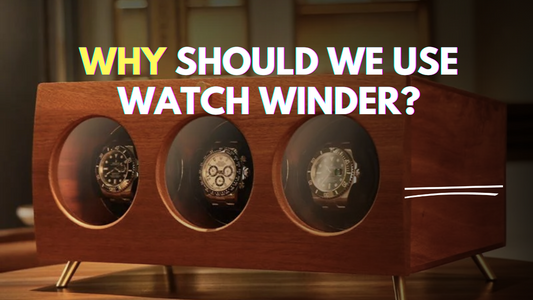In the realm of horology, Rolex stands as an iconic name, synonymous with precision, craftsmanship, and a relentless pursuit of perfection. At the heart of its timepieces lies a symphony of intricate mechanisms, where the power of motion breathes life into each watch, defying the myths surrounding battery reliance.
The Truth About Batteries and Rolex Watches
Contrary to popular belief, the vast majority of Rolex watches do not rely on conventional batteries for their operation. Instead, these masterpieces are powered by meticulously engineered mechanical movements, a hallmark of high-quality luxury watches.
Mechanical Movements: The Heart of Rolex's Craftsmanship
Rolex's mechanical movements are the embodiment of horological excellence. These intricate mechanisms utilize a mainspring that is wound by the wearer's natural motion, a concept known as "automatic" or "self-winding." As the wearer moves their wrist, the mainspring stores energy, gradually releasing it to keep the watch ticking with unparalleled precision.
Iconic models like the Rolex Datejust, Submariner, GMT-Master II, and Oyster Perpetual are living testaments to the brand's mastery of mechanical movements. With each swing of the arm, these timepieces harness the power of motion, ensuring they remain wound and ready for action, no batteries required.
Credit: YouTube Channel - Jimmy split 77
The Rare Exception: Quartz Movements
While mechanical movements are the norm for Rolex, there are a few exceptions that embrace quartz technology. During the 1970s and 1980s, Rolex experimented with quartz movements, which rely on a battery-powered quartz crystal to regulate timekeeping.
The Rolex Oysterquartz Datejust and Oysterquartz Day-Date are notable examples of these quartz models. While they offer accurate and low-maintenance timekeeping, they represent a departure from Rolex's traditional emphasis on mechanical movements.
The Perpetual Rotor: An Engineering Marvel
At the heart of Rolex's self-winding mechanical movements lies the perpetual rotor, an ingenious mechanism that harnesses the wearer's movements to power the watch. This innovative system converts kinetic energy into mechanical energy, which is then stored in the mainspring.
How the Perpetual Rotor Works
As the wearer moves their arm, the perpetual rotor – typically crafted from a dense metal like tungsten or gold – oscillates freely in both directions. This oscillation is translated into a unidirectional motion through a series of gears and bearings, winding the mainspring and storing energy.
The rotor's design is a testament to Rolex's commitment to innovation and precision. Its carefully balanced construction ensures smooth and efficient oscillation, maximizing energy generation while reducing friction and wear on internal components.
Energy Transfer and Power Reserve
The energy generated by the perpetual rotor is seamlessly transferred to the mainspring through a sophisticated system of gears, clutches, and pawls. This intricate process allows for controlled and efficient energy storage, enabling Rolex watches to maintain impressive power reserves, often exceeding 70 hours.
With each movement, the wearer breathes life into their Rolex, ensuring it remains powered and ready for action, a true embodiment of the brand's commitment to mechanical excellence.
Precision Engineering: Rolex's Relentless Pursuit
Rolex's dedication to precision engineering is unparalleled, and it is this commitment that sets the brand apart in the world of horology. Each mechanical movement is a masterpiece of intricate gears, springs, and components, meticulously crafted and assembled to ensure optimal timekeeping.
Advantages of Mechanical Movements
One of the primary advantages of mechanical movements over quartz is their ability to be precision-tuned and adjusted. This level of precision is simply not possible with quartz movements, which rely on a battery-powered quartz crystal for timekeeping.
Additionally, mechanical movements can be serviced and maintained, extending the life of the watch indefinitely. This not only promotes sustainability but also allows Rolex timepieces to be cherished as family heirlooms, passed down through generations.
Rolex's Legacy and Tradition
Rolex's commitment to mechanical movements is deeply rooted in its heritage and tradition, dating back to 1905. From the introduction of the first waterproof watch, the Oyster, to the development of the Perpetual rotor, Rolex has consistently pushed the boundaries of what is possible in mechanical watchmaking.
The brand's watchmakers are trained in traditional techniques, ensuring that the skills and knowledge passed down through generations are preserved. This commitment to preserving the art of mechanical watchmaking is a key part of Rolex's legacy and sets the brand apart from its competitors.
Maintaining Rolex's Power Reserve
To ensure optimal performance and timekeeping, it is crucial to properly wind and set your Rolex watch. Here's a step-by-step guide to help you master this process:
- Identify Your Rolex Model: Different models may have varying winding mechanisms, so it's essential to identify your specific watch.
- Determine the Winding Direction: Most Rolex watches wind clockwise, but some models may wind counterclockwise. Check the manufacturer's instructions.
- Wind the Watch: For automatic watches, simply wear the watch regularly to allow the rotor to wind the mainspring. For manual watches, turn the crown clockwise until you feel resistance.
- Set the Time and Date: Pull the crown out to the appropriate position and turn it to set the time and date.
- Check the Power Reserve: Regularly check your Rolex's power reserve indicator to ensure it's functioning within the recommended range.
By following these steps and understanding your Rolex's power reserve capacity, you can ensure that your watch remains accurate and functional, a true companion for life's adventures.
The Difference: Rolex vs. Battery-Powered Watches
While battery-powered watches offer convenience and accuracy, Rolex's mechanical watches provide a unique blend of craftsmanship, sustainability, and emotional connection.
Sustainability and Emotional Connection
Unlike battery-powered watches that contribute to electronic waste, Rolex's mechanical watches are a more environmentally friendly option, eliminating the need for frequent battery replacements. Additionally, these timepieces often develop a strong emotional connection with their owners, becoming treasured heirlooms or family treasures.
Craftsmanship and Precision
Rolex's mechanical watches are true works of art, with intricate mechanisms and precise engineering. The brand's attention to detail and high-quality craftsmanship make each watch a testament to horological excellence. While mechanical watches may be less accurate than battery-powered models, their ability to be precision-tuned and adjusted sets them apart.
Maintenance and Cost
While battery-powered watches require minimal maintenance, mechanical watches like Rolex demand regular servicing to ensure optimal performance. This includes periodic cleaning, lubrication, and adjustments, which can be time-consuming and costly. However, for many watch enthusiasts, this investment is a small price to pay for the timeless beauty and craftsmanship of a Rolex timepiece.
Conclusion
In the world of horology, Rolex stands as a beacon of excellence, crafting timepieces that transcend mere timekeeping. Through the symphony of perpetual motion and precision engineering, Rolex's mechanical watches defy the myths surrounding battery reliance, offering a unique blend of sustainability, craftsmanship, and emotional connection. Whether you're a watch enthusiast, collector, or simply appreciate the art of fine watchmaking, a Rolex timepiece is a testament to the enduring power of mechanical ingenuity. Share your thoughts and experiences with Rolex watches in the comments below, and let's celebrate the artistry that graces our wrists.
FAQ
Q: Do all Rolex watches have automatic movements?
A: No, not all Rolex watches have automatic movements. While Rolex is renowned for its mechanical and automatic movements, some vintage models from the 1950s and 1960s were battery-operated. However, in recent decades, Rolex has primarily focused on mechanical and automatic movements, featuring self-winding mechanisms.
Q: What sets Rolex's movements apart?
A: Rolex's in-house calibers, designed and developed exclusively by the brand, incorporate several innovative technologies that set them apart. These include the Perpetual Rotor self-winding mechanism, the Cerachrom scratch-resistant ceramic bezel, the Parachrom anti-magnetic hairspring, and the Chronergy Escapement for increased efficiency and power reserve.
Q: Why are Rolex watches so expensive?
A: The high cost of Rolex watches is attributed to several factors, including the intricate engineering and manufacturing processes involved, the use of premium materials, and the brand's commitment to precision and quality. Additionally, some models feature additional complications and functions that further contribute to their luxurious nature and higher price points.
Even the seemingly simple rotor-powered automatic movements are far more complicated than they appear. Manufacturing and assembling these intricate components requires sophisticated engineering, premium materials, and highly trained specialists. Rolex's relentless pursuit of perfection and attention to detail ensure that each timepiece meets the brand's exacting standards.
Moreover, Rolex watches are designed to be heirlooms, built to last for generations. This longevity is achieved through the use of durable and high-quality materials, as well as meticulous craftsmanship. From the sapphire crystal to the stainless steel or precious metal cases, every component is carefully selected and integrated to create a timepiece that withstands the test of time.
Additionally, Rolex invests heavily in research and development to continuously improve and innovate its movements and technologies. This commitment to innovation often results in patented technologies and materials, further contributing to the brand's reputation for excellence and justifying its higher price points.
Q: Do Rolex watches tick?
A: Yes, Rolex watches do indeed tick, although the brand has incorporated technologies to make the ticking sound nearly silent. In quartz mechanism watches, the ticking is more pronounced due to the battery-powered quartz crystal regulating the timekeeping. However, Rolex's mechanical movements utilize advanced technologies to minimize the ticking sound, creating a more refined and discreet experience for the wearer.
The brand's commitment to precision engineering extends to minimizing the audible ticking, ensuring that the watch's operation remains unobtrusive and seamless. While the gentle ticking sound is part of the charm and tradition of mechanical watchmaking for many enthusiasts, Rolex has found a way to balance this heritage with modern preferences for a more discreet timepiece.
Q: How long do Rolex watches last?
A: Rolex watches are renowned for their durability and longevity, with many models lasting for decades or even generations with proper care and maintenance. The brand's commitment to using premium materials, precise engineering, and meticulous craftsmanship ensures that their timepieces can withstand the test of time.
With regular servicing and maintenance, which typically involves cleaning, lubrication, and adjustment of the movement, a Rolex watch can potentially last a lifetime or longer. The brand recommends servicing their watches every 5 to 10 years, depending on the specific model and usage patterns.
Moreover, Rolex watches are designed to be versatile and resilient, capable of withstanding various environmental conditions and activities. From diving to extreme sports, these timepieces are built to endure, further contributing to their longevity and making them a worthwhile investment for those seeking a watch that will stand the test of time.




